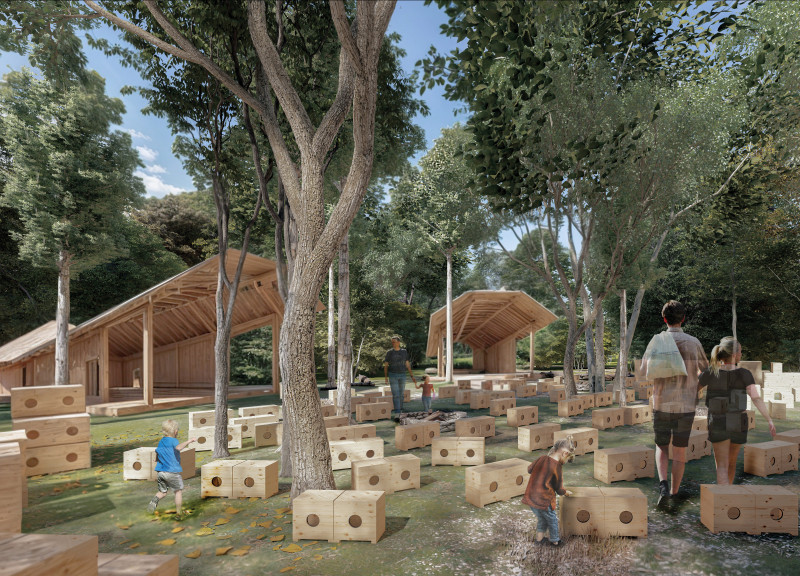5 key facts about this project
Design Functionality and Audience Engagement
At the core of The Sound of Sansusi is the intention to amplify sounds found in its natural setting. The architectural design incorporates a series of stages that are outfitted with acoustically engineered surfaces, allowing the pavilion to transform ambient sounds such as wind and rainfall into a part of the auditory performance. Notably, the seating is inspired by the Cajón drum, encouraging audience participation in the soundscape. This functional design shifts the audience's role from passive observers to active contributors, creating a communal environment for music and storytelling.
Unique Sound Projection and Structural Design
What distinguishes this project from similar architecture is its focus on sound projection and resonance. The geometry of the structure is carefully crafted to enhance both natural and musical sounds, effectively creating a sonic environment that evolves with each performance. The roof structure utilizes lightweight materials such as birch plywood and wooden planks, which not only provide aesthetic value but also allow for the manipulation of acoustics and light within the space. The bar area incorporated into the design promotes informal gatherings, further enhancing the social aspects of the pavilion.
Integration with Nature and Sustainable Practices
Sustainability is embedded within the design through the choice of locally sourced materials, minimizing environmental impact and promoting harmony with the surrounding landscape. The architecture allows for rainwater to contribute to the sound experience, effectively blending natural elements with constructed spaces. This integration supports the pavilion’s intent to create an immersive experience that reflects the essence of its environment.
For deeper insights into The Sound of Sansusi and its architectural elements, readers are encouraged to review the architectural plans, architectural sections, and architectural designs available in the project presentation. Explore the unique architectural ideas that underpin this innovative pavilion and gain a comprehensive understanding of its contribution to contemporary architectural discourse.


 Misak Simon Terzibasiyan
Misak Simon Terzibasiyan 























